…BECAUSE IT’S THERE:
A NEW MEDIA ETHNOGRAPHY OF THE CROOK POINT BASCULE BRIDGE
PROVIDENCE, RHODE ISLAND
INTRODUCTION
When I cautiously walked over the aging railroad timbers and train tracks that had been cold for over three decades, I must admit I felt an adrenaline rush. My excitement built up more and more the further away I walked - from the bank of the river into the throat of the bridge ubiquitously known in Providence for its permanent yawn over the Seekonk River. Signs of those who came to this monumental relic abounded, including graffiti, impromptu hearths, and evidence of alcohol consumption. I looked around from the center of the river and felt remote from the world, hearing the sounds and seeing the sights of Providence, but knowing that I was experiencing unique feelings of remoteness and risk that others have felt at the place since its abandonment. This project seeks to shed light on those who have experienced the bridge before and those who share in the collective memory of a post-industrial landmark.
In order to tap into the feelings of the Providence community, I chose to employ a pilot study eliciting responses from anyone who had either an experience with the bridge or had created graffiti on the Crook Point Bascule Bridge. Because of the largely anonymous nature of the art created, I conducted the survey on three electronic forums in order to reach a wider audience: craigslist.org, MySpace.com, and the graduate student bulletin board listserv at Brown University. In this paper, I will describe the bridge and use photographic media to illustrate certain uses of the space. Then, I will present the evidence from the preliminary electronic ethnography in order to show opinions expressed by respondents about the use of the bridge as a sort of Providence pilgrimage site. The results of the survey indicate that the old bridge has played an important role in local ritual, countercultural activities, and artistic expression since its abandonment.
ABOUT THE BRIDGE
Designed by the Sherzer Rolling Life Bridge Company of Chicago, Illinois, the Crook Point Bascule Bridge was constructed over the Seekonk River for the New York, New Haven, and Hartford Railroad in 1908 (Sherzer 1908). The original total length of the bridge was 913 ft., creating a clear waterway of 90 ft. when the bridge opened to a 64-degree angle.

Figure 1. The original drawing of the Crook Point Bascule Bridge (Sherzer 1908).
Abandoned in 1976, the bridge remains in the open position and can be reached by foot from Gano Street at Power Street in the Providence neighborhood of Fox Point. Minimal barriers have been moved aside to allow access to the bridge site, which is surrounded by overgrowth near athletic fields and a community garden. The wooden construction is rotting or burned out in places, the metal is rusted, and the cables are disconnected. Most notably for this discussion, the bridge is covered in years of graffiti, on which I chose to focus for an ethnographic study.
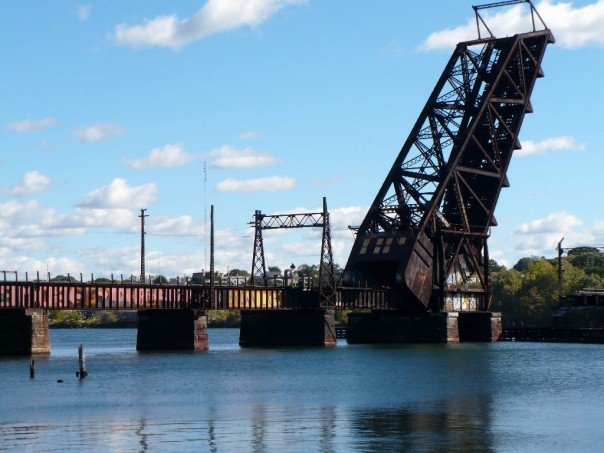
Figure 2. The bridge today. Photo by the author.
THE SURVEY
To begin, I posted the following call for information on the Providence classified listing site at craiglist.org:
Subject: Have you tagged the old bridge in Providence?
Attention all taggers,
I am an Anthropology student at Brown and I’m researching the graffiti on the Seekonk River Drawbridge – you know, that old metal bridge frozen in an eternal yawn connecting Fox Point to East Providence.
Have you left your mark on the bridge? If so, I’d love to hear briefly about your experience:
1) Why did you target the bridge, or how did you hear about it? 2) What was your artistic expression? 3) Should Providence develop the Crook Point Park and bridge into something else? If so, what? 4) Did you do anything else at the bridge other than leave your mark? (e.g. build a fire, drink a forty, etc.)
I would greatly appreciate any information. Even if you haven’t tagged the bridge but have something to say, feel free to e-mail me at the craigslist e-mail above.
Thanks,
J
Additionally, I posted the same note on a message board on MySpace.com, and sent the e-mail over the e-mail list server to all of Brown’s graduate students that have elected to receive bulletin board e-mails.
Overall, I received 22 unique responses in twelve days, the majority from craigslist.org and the graduate student bulletin board. Most responses were positive (20) and the two negative responses were anti-graffiti (“it's disrespectful to ‘tag’ anything public;” “try IGNORING the piece of [expletive redacted] graffity [sic] instead you might get something out of the experience.”). Of the positive responses, informants mentioned various activities other than tagging: athletic team initiations (2), fishing (1), death (2), film production (4), photography (4), music (2), drinking alcohol (2), "geocaching" (1), and finally creating graffiti (2). Almost half (10) were encouraging of a project on the bridge, and three informants offered to share their experiences either in person or on film. Informants suggested various uses for the tunnel, ranging from a family-oriented park (1), an amusement park ride (1), a fishing area (2), and proposing to leave the bridge the same (5). One response mentioned a recent news story relating to the Henderson Bridge, another Rhode Island bridge located in Central Falls.
I will focus on three types of positive responses that highlight the ritual and artistic significance of the Crook Point Bascule Bridge. The first involves the use of the bridge as a site for initiation rites related to a local university men’s crew team. With the exception of redacting expletives and incriminating information, I have not edited these responses except for formatting purposes.
I was a coxswain on the Men's team for 3 years.
As I briefly mentioned, traditionally the novices of the Men's (and Women's) Crews leave a “mark” on the bridge either during spring break, but more usually (because of weather concerns and temperature), during the spring before the national championships the first weekend in June. That being said, each boat (the 8 rowers and their coxswain) usually go to the bridge at dusk (or in the dark) with paint and paint something crazy that relates to the racing season/their first year rowing for [university name redacted]/some funny motto that represents the boat.
I was coxswain for the 2F boat, the 2nd Freshmen 8, for the spring of [year redacted]. Five of us or so went to the bridge one night with brushes, dressed in black, and decided to mark the bridge on both sides and on the center piece that you can go through if you're in a boat. On one side, we painted a [mascot redacted] with "OH [expletive redacted]" 2F written next to it (one of the saying a guy in the boat would say all the time), and on the other side, we painted "THE MIGHTY 2F" because our crew had dominated (that is, beat every other crew during the dual season and the [sports league redacted] championship) as a 2nd freshmen boat (which isn't usually composed of recruited guys and is usually made up of first-time rowers period). We also wrote some other sayings that are now (I think) painted over on that middle section where you can actually stand.
Previous years have rigged up climbing equipment to get to the top -- there is some paint from early 2000 at the top of the bridge, but that was done in daylight, I'm pretty sure.
IMO, the bridge should stay the way it is -- it's beautiful and it's a tradition for both the Men and Women to paint on it as marks of achievement.
And no, we didn't do anything else... other than almost fall overboard. :)
As this example shows, the bridge provides local male and female collegiate athletes with a medium to express their devotion to a cohort within their team through illicit defacement. Thus by interacting intimately through a collective experience with a local landmark, the novices on the team reinforce their status amongst the other members. Because the bridge is visible from all around the area, some members take special measures to reach higher loci for their messages (see figure 3).
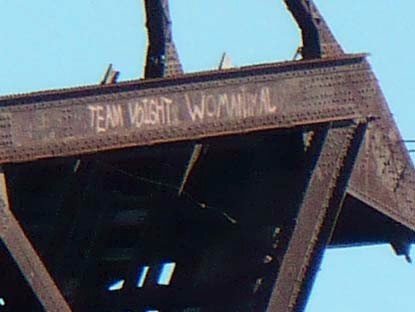
Figure 3. Closeup of “Team Voight Womanimal” graffito on the uppermost south-facing surface of the bridge. Photo by the author.
The second response that deserves attention discusses both the artistic and historical importance of the bridge in relation to a non-mainstream community in Providence.
I feel like I may have talked to someone about this project before but I'm not sure. I was in a movie my friend filmed at the train bridge, and he went on to make a documentary about Derek Lumna, who jumped off the top of the bridge in a kind of dare and didn't make. The name of the documentary was "Lumna Lives", which came from a stencil put up around town and on the bridge itself shortly after the incident. This in my eyes is one of the more important graffiti pieces related to the bridge, altough I don't think it's visible anywhere now. On a side note, this supposedly happened the night the Meatmen played at Club Babyhead and Lumna had taken a [expletive redacted] on stage. I'd been at that show but missed the crapping episode because my dad would always pick my friends and I up bfore the encore. Such are the tradgedies of juvinile punk.
Lumna of course was not the only punk who jumped off the bridge. The other was a closer friend of mine named Johnny Trolley who committed suicide off the bridge a few years ago. It stil saddens me to think about it, especially since I'd seen him about a week before and he seemed really pumped about starting a new band. He and the other guitar player played an acoustic version of "Substitute" by the Who, the only time I'd ever heard him sung and I was really amazed.
He'd been a drummer in a band prior that my band had played a few shows with, and hadn't sung. I realize this doesn't have much to do with the graffiti angle, but the trainbridge was always kind of tribal headquarters/ drinking spot for punks during the ninties, which was one punks could actually afford to live on the eastside, so I think it's relevant.
Several uses of the bridge emerge from this response, including using the bridge as a set for a documentary film (see figure 4), individuals using the bridge as a place for committing suicide, and the use of the abandoned space as a gathering place for those involved with punk counterculture. Another interesting point implied by this response is the contrast between the gentrification of the area around the bridge and the decay of the bridge itself. Suicide is an important use to mention relating to this bridge and other bridges, for the recent film “The Bridge” (Steel 2006) documented over two-dozen suicides at the Golden Gate Bridge in San Francisco (see figure 5).
Rope swing for glory
Figure 4. Click above for “Rope swing for glory” video created at the bridge.
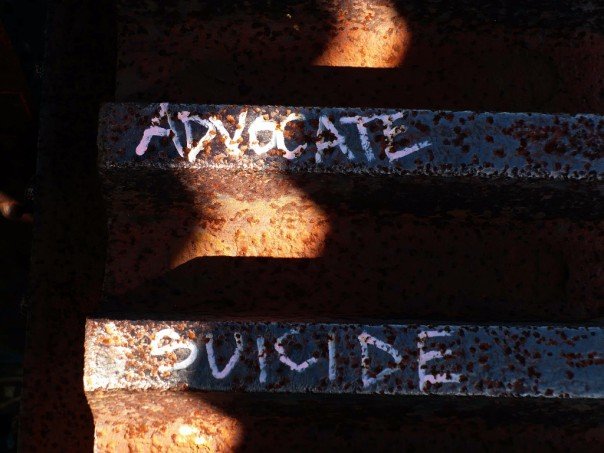
Figure 5. “Advocate suicide” graffito created on the teeth of the bridge gears. Photo by the author.
Two more responses illustrate the importance of the bridge as a core component of creative and political expression. The first involves using the bridge as a canvas for displaying a wider political opinion.
1) Why did you target the bridge, or how did you hear about it?
When I first moved to rhode island,, i asked someone to show me some kewl stuff, since i was new.. so we went to the bridge... to take a look.. it was a free thrill.
I noticed it was tagged.. and it was obvious there was a lot of action there.. and it would be a good place to communicate.
So i eventually went back with some paint of my own.
2) What was your artistic expression?
I tagged the bridge with this mark... G.A.S. *~* G.lobal A.gricultural S.ociety
well.. it means a lot really... food is the fuel we need to survive.. gasoline is the uel we use to kill the planet.
--
even ethenol is not so wise.. and should be illegal.. because 16,000 people die daily due to mal-nutrition.. and feedins a car before a human is actually against the law.. it is called .. A CRIME AGAINST HUMANITY.. punishable by Law.. and it is also public endangerment.. because if there is not enough food to go around.. as it is.. then feeding cars corn... well.. it pretty much garuntees more will starve.. -- here is the proof...
corn is in about 80% of all food products in the average grocery store in america... when ethenol is sold as fuel.. there will e less for human consumption,, driving up the price.
people are already starving to death because they don't have money.
so obviously,, increasing the price of food will cause more to die.
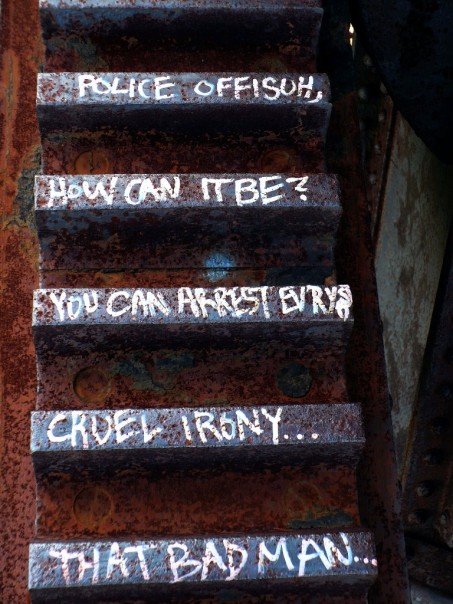
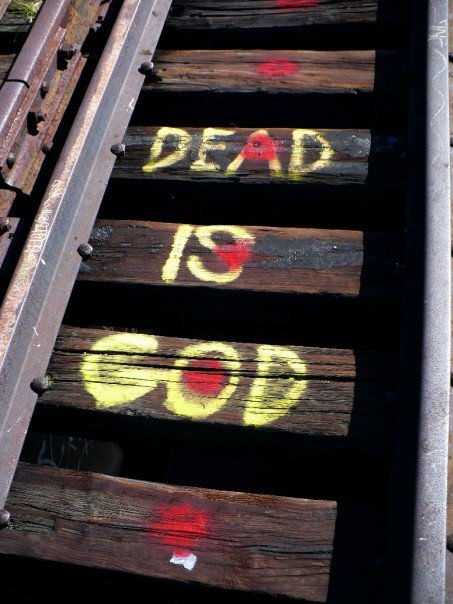
Figure 6. Examples of politically-themed graffiti. Photos by the author.
As the submitted example and those featured in figure 6 demonstrate, people have utilized the bridge to express their political opinions, despite the fact that the space is uninhabited and largely invisible to the wider public.
Aside from the use of the bridge as film scenery, a final example response shows another way people have incorporated the bridge into creative expression through composition.
Well now....been thinking about that there bridge for some time now. A wonderful place for a coincidence, yes?
I walked, alone, one chilly morning - all the way along the tracks, over the river, under the end and out to the edge.
Each step was a marvelous experience: The simple, sturdy form; the un-superfluousness of the overhead, trolley-style electrical system... I could see the sparks flying; happy faces of awe-inspired kids peeking out the windows and hear the "click, clack" of the trucks gliding on the rails.
I saw the ghosts of vandals, lovers, drunks and hobos. Their marks carved, scraped and sprayed many years before they would frown on such behavior.
I could imagine the terror and suddenness of a misstep--falling, in slomo, to the icy waters....The enveloping, sinking feeling, the shock, the surfacing (?) note: I always survive the perils of my daydreams... being helplessly swept along the course of the river, trying to remember the view to determine the closest place to swim to safety, the reality that I'm all alone and it's up to me to fight and survive this potential disaster. Quick, powerful strokes soon give way to cold aches and doubt - I call to a passing pleasure craft until my throat is sore - realizing, at last that I do not have the power to turn their smiling, happy, talking faces in my direction.....simply a waste of valuable energy...- trying to turn their outing into a rescue operation was presumptive and imposing, anyway... This ends, of course with me crawling up on a bank, lying there for some time and eventually making my way home where my mother says, smiling "Sure honey, now go get some dry clothes on and wash up for dinner... I need your help setting the table!"
When I'm standing on railroad tracks or a busy highway, I never can help thinking..."Wow, if I had been standing here sixty minutes or sixty years ago, I'd be squished like a pancake..."
Curious bit of rusted, cold - yet fascinating architectural grandeur, nyet?
Well, because it's there, I must climb to the top and post my guideon... I'm gathering my equipment now. Have anything you want brought to the top? It shall live in infamy, I assure you.
I'd consider sharing the secret details of the mission with one such as yourself who might consider filming the stunt, or?....'wadda ya say?
...Adventure, Danger, Romance: My Specialties... (-;
In addition to using Crook Point as the setting in his brief story, the author points out the bridge’s historicity and possibility for evoking wonder and curiosity about its past patrons. The passage also alludes to the danger associated with walking along the bridge, echoed by one of the other responses by a filmmaker, and parallel to my initial experience at the bridge. Finally, this passage demonstrates explicitly (“because it’s there”) why so many people in recent times have formed different attachments to the bridge – simply because of its existence as a nearby landmark and a remnant of something from Providence’s past.
CONCLUSION
From creating an album of music composed of drumming on its rusting façade, to using it as a backdrop and billboard for different types of creative expression, to simply viewing it from afar, the residents of Providence regard the Crook Point Bascule Bridge with a certain reverential respect. Although this ethnographic sample is limited in time and scope, the responses reflect several recurring themes about the collective experience of the bridge among local residents, including ritual, political, and artistic expression, and many others. It is clear from this brief study that graffiti is not the only way that Providence residents experience the Crook Point Bascule Bridge. Hopefully the importance of the bridge to the different sections of the local community will be taken into account should Providence undertake plans to use the land around the bridge and the associated train tracks for public city space.
REFERENCES
Sherzer, Albert H.
1908 Sherzer Rolling Lift Bridges. Chicago: Sherzer Rolling Lift Bridge Co.
Steel, Eric. dir.
2006 The Bridge. San Francisco: Easy There Tiger Productions.
